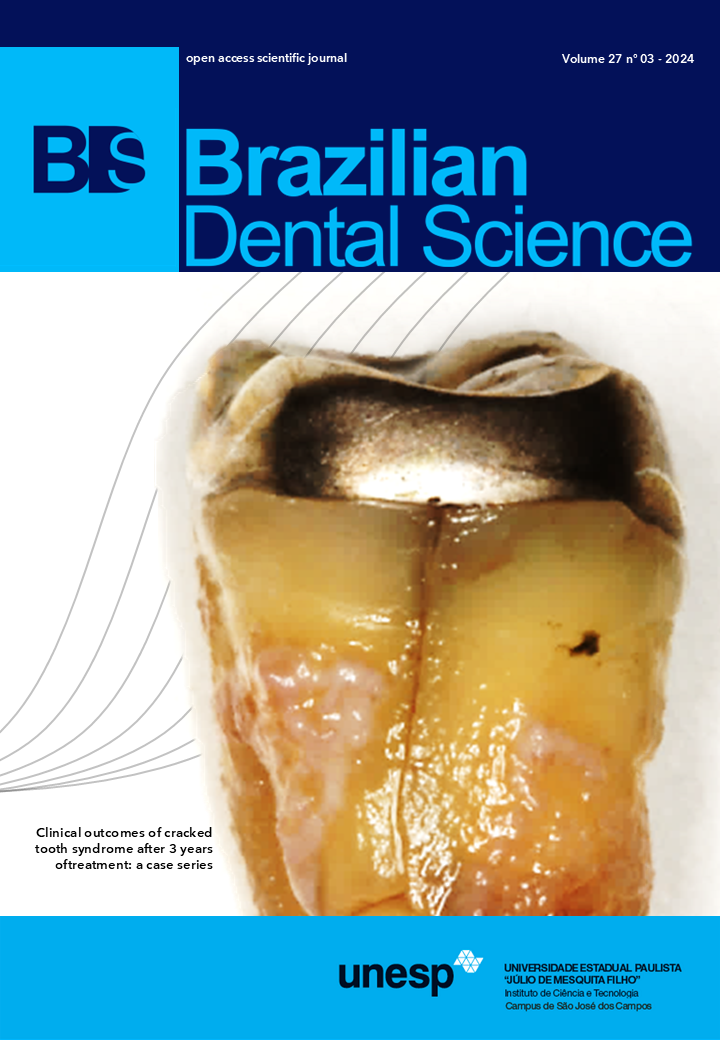The effect of ozone and silver diamine fluoride combination on enamel microhardness: an in vitro study
DOI:
https://doi.org/10.4322/bds.2024.e4273Abstract
Objective: This study aims to evaluate ozone’s impact on initially formed enamel caries before applying silver diamine fluoride, utilizing a Vickers microhardness tester as the excitation source. Material and Methods: Sixty premolars were exposed to demineralization to form artificial incipient caries. Then, the teeth were arbitrarily distributed among four investigational groups (group 1 received silver diamine fluoride, group 2 received ozone, group 3 received ozone then silver diamine fluoride, while group 4 received no treatment as a control group). Enamel microhardness was evaluated at three stages: before exposure to demineralization solution, after exposure, and following treatment using a Vickers microhardness tester. A one-way ANOVA test was utilized to calculate the difference in microhardness values across the four groups, followed by Tukey’s test and paired t-tests were accomplished before and after treatment. 5% was established as the significance level. Results: The data shows a clear and statistically significant difference in surface microhardness between the control and experimental groups. Tukey’s test indicates that Group 3 and Group 1 did not have a significant difference. However, paired t-tests conducted before and after treatment revealed significant differences in the experimental groups, while non-significant differences were found before and after in the control group. Conclusion: This investigation disclosed that SDF is still an excellent option whereas ozone alone has no impact on remineralizing enamel incipient caries, and there is no advancement in combining both approaches.
KEYWORDS
Dental caries; Fluorides; Hardness; Ozone; Silver diamine fluoride.
Downloads
Published
How to Cite
Issue
Section
License
Brazilian Dental Science uses the Creative Commons (CC-BY 4.0) license, thus preserving the integrity of articles in an open access environment. The journal allows the author to retain publishing rights without restrictions.
=================




























